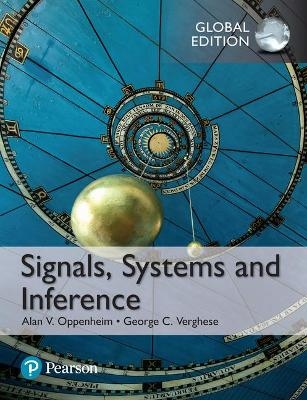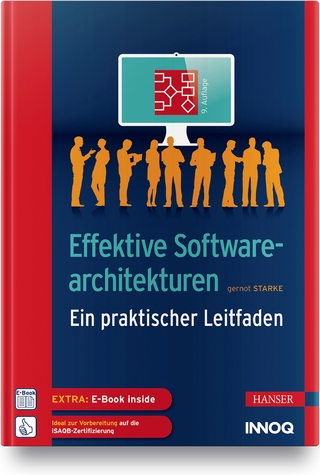
Signals, Systems and Inference, Global Edition
Pearson Education Limited (Verlag)
978-1-292-15620-0 (ISBN)
An Integrative Approach to Signals, Systems and Inference
Signals, Systems and Inference is a comprehensive text that builds on introductory courses in time- and frequency-domain analysis of signals and systems, and in probability. Directed primarily to upper-level undergraduates and beginning graduate students in engineering and applied science branches, this new textbook pioneers a novel course of study. Instead of the usual leap from broad introductory subjects to highly specialised advanced subjects, this engaging and inclusive text creates a study track for a transitional course.
Properties and representations of deterministic signals and systems are reviewed and elaborated on, including group delay and the structure and behavior of state-space models. The text also introduces and interprets correlation functions and power spectral densities for describing and processing random signals. Application contexts include pulse amplitude modulation, observer-based feedback control, optimum linear filters for minimum mean-square-error estimation, and matched filtering for signal detection. Model-based approaches to inference are emphasised, in particular for state estimation, signal estimation, and signal detection.
Preface
The Cover
Acknowledgments
Prologue
1. Signals and Systems
1.1 Signals, Systems, Models, and Properties
1.1.1 System Properties
1.2 Linear, Time-Invariant Systems
1.2.1 Impulse-Response Representation of LTI Systems
1.2.2 Eigenfunction and Transform Representation of LTI Systems
1.2.3 Fourier Transforms
1.3 Deterministic Signals and Their Fourier Transforms
1.3.1 Signal Classes and Their Fourier Transforms
1.3.2 Parseval’s Identity, Energy Spectral Density, and Deterministic Autocorrelation
1.4 Bilateral Laplace and Z-Transforms
1.4.1 The Bilateral z-Transform
1.4.2 The Bilateral Laplace Transform
1.5 Discrete-Time Processing of Continuous-Time Signals
1.5.1 Basic Structure for DT Processing of CT Signals
1.5.2 DT Filtering and Overall CT Response
1.5.3 Nonideal D/C Converters
1.6 Further Reading
Problems
Basic Problems
Advanced Problems
Extension Problems
2. Amplitude, Phase, and Group Delay
2.1 Fourier Transform Magnitude and Phase
2.2 Group Delay and the Effect of Nonlinear Phase
2.2.1 Narrowband Input Signals
2.2.2 Broadband Input Signals
2.3 All-Pass and Minimum-Phase Systems
2.3.1 All-Pass Systems
2.3.2 Minimum-Phase Systems
2.3.3 The Group Delay of Minimum-Phase Systems
2.4 Spectral Factorization
2.5 Further Reading
Problems
Basic Problems
Advanced Problems
Extension Problems
3. Pulse-Amplitude Modulation
3.1 Baseband Pulse-Amplitude Modulation
3.1.1 The Transmitted Signal
3.1.2 The Received Signal
3.1.3 Frequency-Domain Characterizations
3.1.4 Intersymbol Interference at the Receiver
3.2 Nyquist Pulses
3.3 Passband Pulse-Amplitude Modulation
3.3.1 Frequency-Shift Keying (FSK)
3.3.2 Phase-Shift Keying (PSK)
3.3.3 Quadrature-Amplitude Modulation (QAM)
3.4 Further Reading
Problems
Basic Problems
Advanced Problems
Extension Problems
4. State-Space Models
4.1 System Memory
4.2 Illustrative Examples
4.3 State-Space Models
4.3.1 DT State-Space Models
4.3.2 CT State-Space Models
4.3.3 Defining Properties of State-Space Models
4.4 State-Space Models from LTI Input-Output Models
4.5 Equilibria and Linearization of Nonlinear State-Space Models
4.5.1 Equilibrium
4.5.2 Linearization
4.6 Further Reading
Problems
Basic Problems
Advanced Problems
Extension Problems
5. LTI State-Space Models
5.1 Continuous-Time and Discrete-Time LTI Models
5.2 Zero-Input Response and Modal Representation
5.2.1 Undriven CT Systems
5.2.2 Undriven DT Systems
5.2.3 Asymptotic Stability of LTI Systems
5.3 General Response in Modal Coordinates
5.3.1 Driven CT Systems
5.3.2 Driven DT Systems
5.3.3 Similarity Transformations and Diagonalization
5.4 Transfer Functions, Hidden Modes, Reachability, and Observability
5.4.1 Input-State-Output Structure of CT Systems
5.4.2 Input-State-Output Structure of DT Systems
5.5 Further Reading
| Erscheinungsdatum | 21.01.2017 |
|---|---|
| Verlagsort | Harlow |
| Sprache | englisch |
| Maße | 180 x 230 mm |
| Gewicht | 813 g |
| Themenwelt | Mathematik / Informatik ► Informatik |
| Technik ► Elektrotechnik / Energietechnik | |
| Technik ► Nachrichtentechnik | |
| ISBN-10 | 1-292-15620-1 / 1292156201 |
| ISBN-13 | 978-1-292-15620-0 / 9781292156200 |
| Zustand | Neuware |
| Haben Sie eine Frage zum Produkt? |
aus dem Bereich


